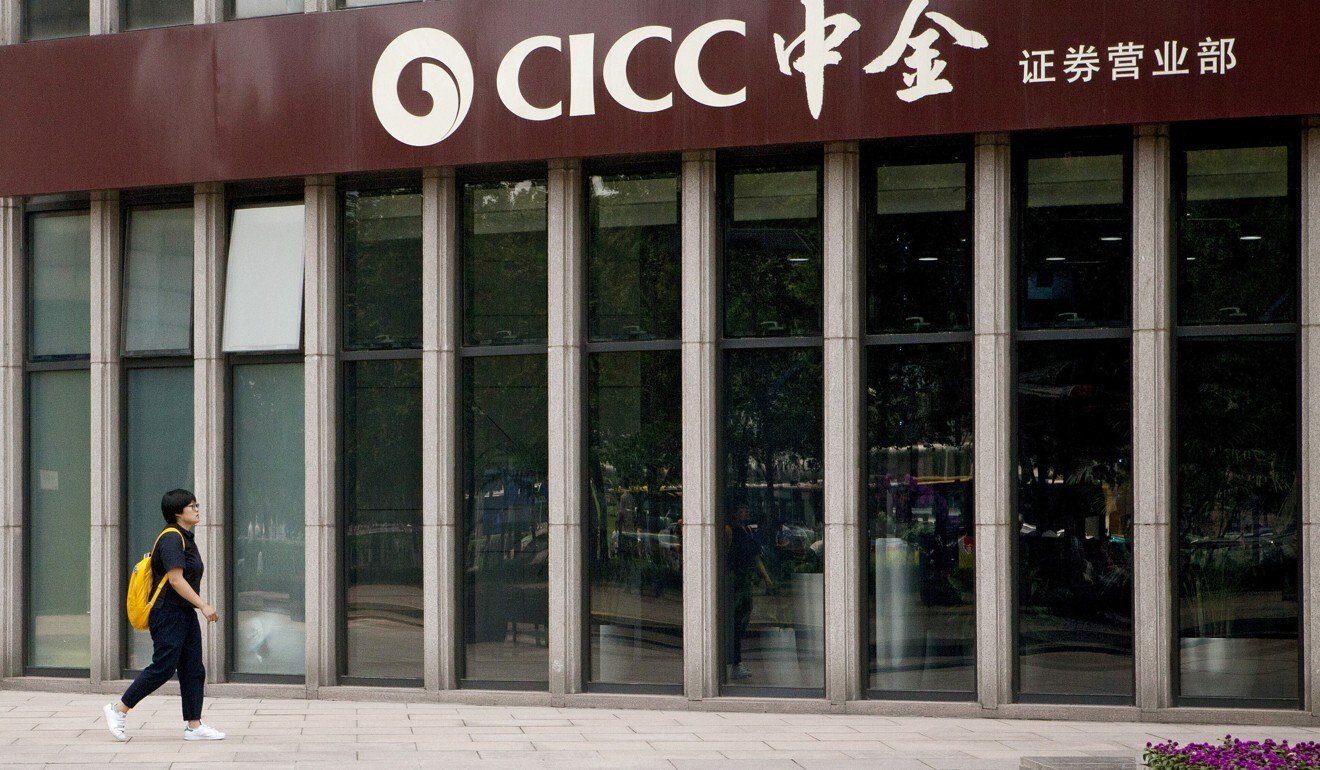
China’s banking shares head for ‘V-shaped turnaround’, to rise 60 per cent, CICC says
- A gauge of 38 Chinese banks is due for its best quarterly performance this month, as bargain hunters pile in amid improving profitability
- Banks will rise to levels that match book values, implying gains of 60 per cent, according to China’s largest investment bank
China’s strengthening economic recovery has already spurred the buying of abandoned banking stocks, as the sector heads for its biggest quarterly gain this year, and China International Capital Corporation (CICC), the country’s biggest investment bank, has forecast a 60 per cent rise.
A gauge of 38 mainland China-traded commercial lenders has risen 5.7 per cent this quarter, according to a gauge compiled by data provider Shanghai DZH. That beats the performance of the benchmark Shanghai Composite Index, which has risen 2.9 per cent in that period. This momentum will strengthen and lift shares to trade at their book values, as earnings continue to improve amid accelerating economic growth, CICC said this week.
The rotation to banking stocks, viewed by traders as a proxy of economic growth, comes as China’s economy grew for a second consecutive quarter over the past three months, with economic activity further normalising after coronavirus-driven lockdowns were lifted across the country. The stocks were among industries most battered by the outbreak early this year, amid fears that the shutdown of factories and weak consumer spending would increase bad loans and sap credit demand. The banking gauge tumbled 13 per cent in the first quarter, posting a bigger decline than the benchmark.
“Banks’ earnings probably troughed in the second or the third quarter,” said Zhang Shuaishuai, an analyst at CICC. “Earnings growth will accelerate going forward, in a V-shaped turnaround.”
Beaten down valuations will be another potential nudge for the stocks. China’s banking shares have long traded at discounts to their book values, as investors fled the sector with China transitioning to economic growth driven by consumption instead of credit expansion. The stocks now trade at an average 36 per cent discount on their book values, according to Shanghai DZH.
The sector, however, remains a laggard this year, having fallen 4.2 per cent against an 8.6 per cent gain by the Shanghai Composite.


